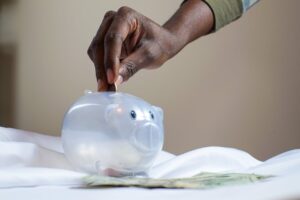On March 27, corona-related relief for retirement plans and IRAs signed into law by President Trump allowed U.S. workers under 59½ to begin taking early distributions of up to $100,000 from retirement plans and Individual Retirement Accounts without paying the 10 percent penalty. The new law expanded its provisions on June 19 to include more of the 29.1 million Americans who had lost jobs or businesses.
To date, few younger workers have tapped the money in a retirement plan or Individual Retirement Account, and fewer still have asked for the maximum loan amount. Between April 1 and June 30, 3 percent of Fidelity’s accountholders took an average distribution of $4,800. At Vanguard, which tracked the numbers through May 31, less than 2 percent asked for loans averaging $10,413. 401(k) AND 403(b) plans.
But there’s a larger story for business reporters to follow here, while keeping an eye on corona-related distributions (CRDs). Taking a retirement plan distribution, or using retirement savings, is a double-edged sword for some retirement savers:
#1: Loan defaults
According to the 2017 study “Borrowing from the Future: 401(k) Plans and Loan Defaults,” a study that tracked 800 401(k) plans over a five-year period, “workers borrow more when a plan permits multiple loans.” While 90 percent paid back their loans, “86 percent of workers changed jobs with a loan default on the outstanding balance.” That’s a particularly troubling statistic as COVID-19 continues to wreak havoc on the economy, and more workers are tempted to take out a second loan.
Use your news organization’s social media to find readers who have, or are, thinking of taking out a loan against their retirement plan. Do they understand the rules on CRDs? Did a recent job loss or furlough force them to default on a loan, and apply for a second? Include a financial planner and a Certified Public Accountant in your interviews. If they are still paying off a first loan, how do they plan to manage both?
#2: Delayed retirement
Loan defaults are just one side of the story. In a survey of 1,000 Americans from 45 to 64, 36.4 percent told personal finance site MoneyRates.com that they expected to delay retirement because of COVID-19, and close to 30 percent expected to dip into retirement savings. How can they avoid making that choice? Ask the financial experts on your panel.











